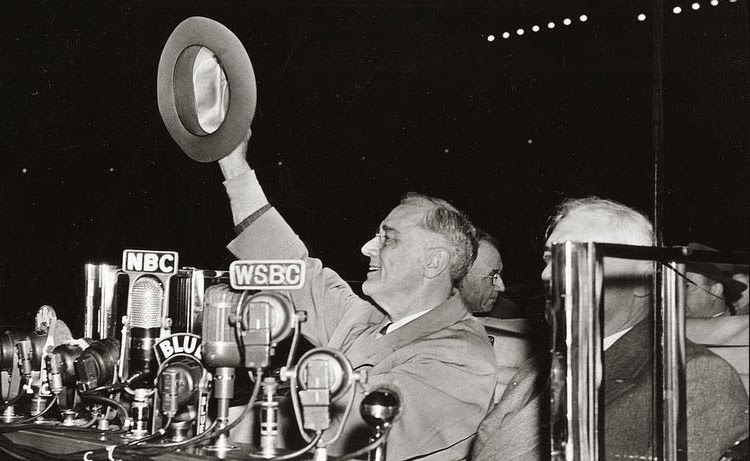On December 7th 1941, the United States was attacked by the Japanese at Pearl Harbor. At the time of the attack, there were still negotiations about maintaining peace in the Pacific. An hour after the bombing at Pearl Harbor, the US Secretary of State received a reply from Japan stating that it was pointless to continue diplomatic negotiations. Despite this, there was no information regarding an attack. Because of the large distance between Hawaii and Japan, the attack is believed to have been planned many days or weeks ago. During this time, the Japanese people have deceived the US governments with hopes of peace. The attacks have caused much damage on American navy and military forces. In addition many lives have been lost, along with American ships being destroyed. The United States were not the only victim of Japanese attacks. Malaya, Hong Kong, Guam, the Philippine Islands, Wake Island, and Midway Island were also attacked. The President stated that he would direct that “all measures be taken for our defense”. Roosevelt expresses his determination when he states that the American people will fight until absolute victory. In addition, Roosevelt assures the people of America that such a tragedy will never occur again. Lastly, Roosevelt asks congress for an official declaration of war against the Japanese empire for their attack on Pearl Harbor.
Friday, March 14, 2014
LAD #34 and #35
34
On December 7th 1941, the United States was attacked by the Japanese at Pearl Harbor. At the time of the attack, there were still negotiations about maintaining peace in the Pacific. An hour after the bombing at Pearl Harbor, the US Secretary of State received a reply from Japan stating that it was pointless to continue diplomatic negotiations. Despite this, there was no information regarding an attack. Because of the large distance between Hawaii and Japan, the attack is believed to have been planned many days or weeks ago. During this time, the Japanese people have deceived the US governments with hopes of peace. The attacks have caused much damage on American navy and military forces. In addition many lives have been lost, along with American ships being destroyed. The United States were not the only victim of Japanese attacks. Malaya, Hong Kong, Guam, the Philippine Islands, Wake Island, and Midway Island were also attacked. The President stated that he would direct that “all measures be taken for our defense”. Roosevelt expresses his determination when he states that the American people will fight until absolute victory. In addition, Roosevelt assures the people of America that such a tragedy will never occur again. Lastly, Roosevelt asks congress for an official declaration of war against the Japanese empire for their attack on Pearl Harbor.
On December 7th 1941, the United States was attacked by the Japanese at Pearl Harbor. At the time of the attack, there were still negotiations about maintaining peace in the Pacific. An hour after the bombing at Pearl Harbor, the US Secretary of State received a reply from Japan stating that it was pointless to continue diplomatic negotiations. Despite this, there was no information regarding an attack. Because of the large distance between Hawaii and Japan, the attack is believed to have been planned many days or weeks ago. During this time, the Japanese people have deceived the US governments with hopes of peace. The attacks have caused much damage on American navy and military forces. In addition many lives have been lost, along with American ships being destroyed. The United States were not the only victim of Japanese attacks. Malaya, Hong Kong, Guam, the Philippine Islands, Wake Island, and Midway Island were also attacked. The President stated that he would direct that “all measures be taken for our defense”. Roosevelt expresses his determination when he states that the American people will fight until absolute victory. In addition, Roosevelt assures the people of America that such a tragedy will never occur again. Lastly, Roosevelt asks congress for an official declaration of war against the Japanese empire for their attack on Pearl Harbor.
Wednesday, March 5, 2014
LAD #33
When Roosevelt was to be inaugurated, he was in the midst of severe economic problems and national concerns. In his Inaugural Adress he began by easing the minds of the American people. He promised that America could overcome all obstacles if they kept a optamistic attitude. "We have nothing to fear but fear itself". Although the taxes had increased, markets were losing availibility, and industrial productivity had decreased, Roosevelt claimed that America could redeem itself with its social values. Hard work and the revival of the joy of achievement would bring the nation back to its feet. A more efficient use of land, a higher employment rate, increased agricultural as well as industrial productivity and the organized national palnnign of transport and communication was also necessary. Lastly, Roosevelt stressed the improtance of the strict supervision of banking, investment, and an end to money speculation was essential. In order to achieve these national goals, Roosevelt encouraged the importance of "good neighbors" and working together as one within the society. Roosevelt assured the nation that he would do whatever it took to protect the nation in a time of need.
LAD #32
The Kellogg-Brand Pact of 1928 was a seperate peace treaty made by the U.S. with European world powers after WWI had ended. It stated that any power who wanted to declare war, would be denied. It was seperated into different articles. The first article stated that the High Contracting parties should consult one another when they wanted to declare war against another country. Article two said that if any problem should ever occur between these nations, then they should be dealt with "pacificily." The last article stated that the treaty should be put into effect immediately following ratification. Basically, the Pact oulawed declaring war, which proved to be unsuccessful.
Subscribe to:
Comments (Atom)



